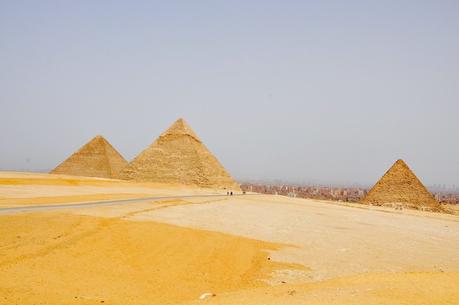If you have dreams of returning to international travel again soon, you may want to think twice before booking your flight. Last week, the U.S. State Department added 116 countries to its Do Not Travel List, citing a rising number of COVID-19 cases across the globe. That brings the total number of destinations that are tagged with that status to 150, representing roughly 80% of the planet.
This unprecedented number of travel advisories comes even as COVID vaccines continue to roll out around the world. Those vaccines provide hope that there is indeed a light at the end of the pandemic tunnel, even as we are sharply reminded that there is so much more to do before things ever begin to return to normal.

Warnings for Unexpected Destinations
Anyone who has ever read the State Department's Do Not Travel List probably knows which countries are routinely cited as places that American's shouldn't go. Unsurprisingly, destinations like North Korea, Iran, and Somalia are perennial members of this dubious club. But with last week's expansion of the list, there are now some unexpected nations that have now earned that status as well.
Some of the new additions to the Do Not Travel List include Canada, Mexico, the U.K., France, and Germany, all of which earned the "Level 4" warning due to an alarming rise in coronavirus cases in recent days. Other popular travel destinations on the list include Egypt, Greece, Italy, Turkey, Switzerland, and Bermuda.
Some countries-including China, Australia, Japan, and Iceland-are on a "Level 3" alert, which indicates that individuals should "reconsider travel" to those places. Nepal, which has just reopened its borders for the Everest climbing season, also falls into this category.

COVID Concerns Remain High
The expanded Do Not Travel List comes even as about 38% of Americans have now been fully vaccinated and more than half of the country having received at least one shot. But the rate of vaccinations has slowed dramatically in recent days as those who have wanted a shot have gotten it. Roughly 35-40% of Americans are reluctant to get inoculated against the coronavirus, potentially inhibiting the chances of reaching herd immunity and continuing to keep COVID rates high across the country.
In other parts of the world, the story is a bit different. Many countries have yet to see any vaccines delivered at all, which is causing new COVID waves in many parts of the world. Brazil and India are both dealing with especially high numbers at the moment, but there are dozens of other nations that continue to struggle with controlling the spread of the virus while waiting for vaccines to be delivered.
To put things in perspective, while the use rushes towards half the population being vaccinated and now faces a surplus of the COVID drugs, other parts of the world are struggling. Spain, Italy, and France have not yet hit a 7% vaccination rate, while South Africa sits at 1% and the Philippines is at .1%. This unequal distribution of the vaccine means that it could take years for the planet to finally become safe to travel again.

Warnings Aren't Mandatory
It is important to point out that the U.S. State Department's warnings have always been optional and advisory in nature. That is to say, they do not prevent anyone from going to the destinations on the Do Not Travel List, but are instead meant to provide context and warnings.
Because they are not mandatory, travelers are still free to visit these places, fully accepting the risks. With more people getting vaccinated, it seems likely that there will be a slight uptick in international travel this year, although it is important to always keep local regulations in mind when doing so. The places you visit may still require a period of quarantine upon arrival and vaccine passports are likely to become a more common travel requirement as well.
Thanks to the slow rollout of the vaccine to other parts of the planet, most travelers are advised to stay close to home or only travel domestically for at least the rest of 2021. The hope is that things will begin to improve in the months ahead, but many developing nations are likely to struggle with building the infrastructure necessary to maintain and distribute vaccines in a timely fashion. Right now, the level of inequality between those countries and the more developed world is staggering, but hopefully countries like the U.S., China, the U.K., and others will be able to assist others soon.
That light at the end of the tunnel is indeed getting closer, but it is a slow process right now. There may still be a few bumps along the way, but there is relief in sight. We all just need to be patient for a little longer and do our part to stay safe. If we do that now, the world will be waiting for us when it is time to resume our adventures and exploration.



